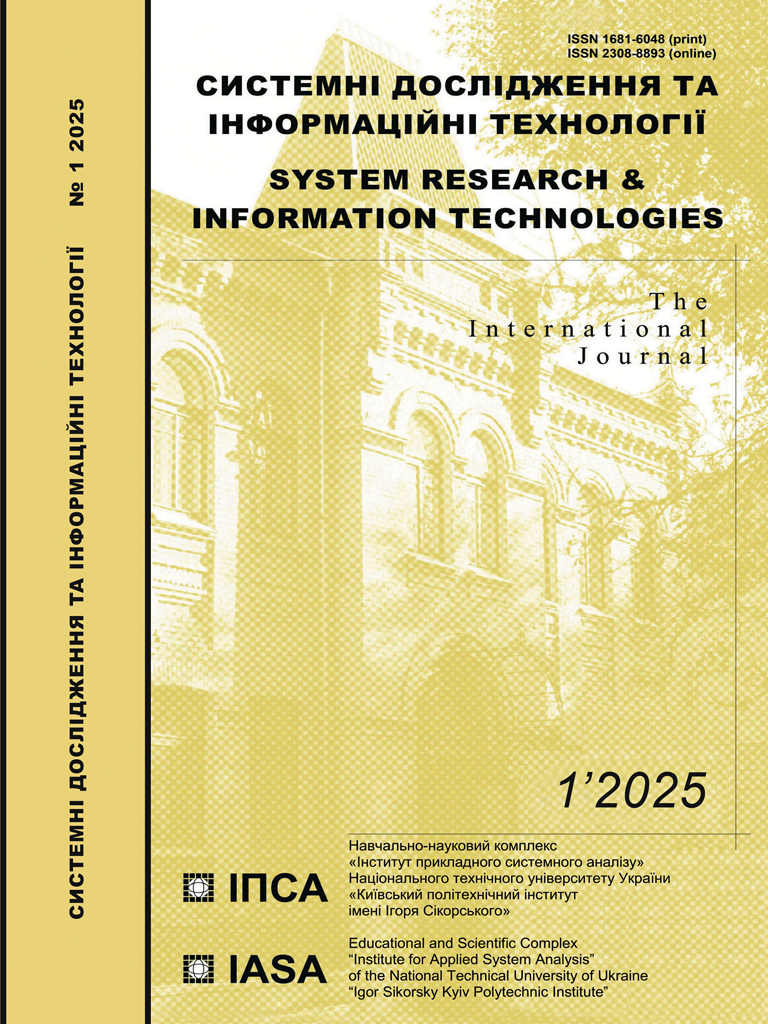The hybrid sequential recommender system synthesis method based on attention mechanism with automatic knowledge graph construction
DOI:
https://doi.org/10.20535/SRIT.2308-8893.2025.1.01Keywords:
recommender system, graph neural network, graph embeddingsAbstract
Sequential personalized recommendations, such as next best offer prediction or modeling demand evolution for next basket prediction, remain a key challenge for businesses. In recent years, deep learning models have been applied to solve these problems and demonstrated high feasibility. With the introduction of graph-based deep learning, it has become easier to perform collaborative filtering and link prediction tasks. The current paper proposes a new method of building a recommender system using a graph representation learning framework in combination with deep neural networks for sequence-to-sequence modeling and statistical learning for sequence-to-graph mapping. Benchmarking model performance on an online retail store visits dataset provides evidence of the method’s ranking capabilities.
References
C. Aggarwal, Recommender Systems: The Textbook. Springer, 2016.
K. Falk, Practical Recommender Systems. Manning, 2019.
A. Rasool, Next Best Offer (NBO) / Next Best Action (NBA)- why it requires a fresh perspective? 2019. [Online]. Available: https://www.linkedin.com/pulse/next-best-offer-nbo-action-nba-why-requires-fresh-azaz-rasool/
S. Wang et al., “Modeling User Demand Evolution for Next-Basket Prediction,” IEEE Transactions on Knowledge and Data Engineering, vol. 35(11), pp. 11585–11598, 2023. doi: https://doi.org/10.1109/TKDE.2022.3231018
K.A. Eliyahu, Achieving Commercial Excellence through Next Best Offer models. [Online]. Available: https://www.linkedin.com/pulse/achieving-commercial-excellence-through-next-best-offer-kisliuk/
S. Wang et al., “Sequential Recommender Systems: Challenges, Progress and Prospects,” in IJCAI 2019, 2019. doi: https://doi.org/10.24963/ijcai.2019/883
F. Garcin, C. Dimitrakakis, and B. Faltings, “Personalized News Recommendation with Context Trees,” in Proceedings of the 7th ACM conference on Recommender systems, ACM, 2013. doi: https://doi.org/10.1145/2507157.2507166
R. He, J. McAuley, “Fusing Similarity Models with Markov Chains for Sparse Sequential Recommendation,” in 2016 IEEE 16th International Conference on Data Mining (ICDM), Barcelona, 2016, pp. 191–200. doi: 10.1109/ICDM.2016.0030
Q. Xia et al., “Modeling Consumer Buying Decision for Recommendation Based on Multi-Task Deep Learning,” in CIKM ’18, 2018. doi: https://doi.org/10.1145/3269206.3269285
C. Zhao, J. You, X. Wen, and X. Li, “Deep Bi-LSTM Networks for Sequential Recommendation,” Entropy (Basel), 22(8), 870, 2020. doi: https://doi.org/10.3390/e22080870
A. Vaswani et al., “Attention Is All You Need,” in Advances in Neural Information Processing Systems (NIPS 2017), pp. 5998–6008, 2017. doi: https://doi.org/10.48550/arXiv.1706.03762
H. Ying et al., “Sequential Recommender System based on Hierarchical Attention Network,” in Proceedings of the Twenty-Seventh International Joint Conference on Artificial Intelligence, Stockholm, 13–19 July 2018, pp. 3926–3932. doi: https://doi.org/10.24963/ijcai.2018/546
Z. Fan et al., “Sequential Recommendation via Stochastic Self-Attention,” in Proceedings of the ACM Web Conference 2022 (WWW '22), 2022. doi: https://doi.org/10.1145/3485447.3512077
T. Hekmatfar, S. Haratizadeh, P. Razban, and S. Goliaei, “Attention-Based Recommendation On Graphs,” arXiv. 2022. [Online]. Available: https://arxiv.org/abs/2201.05499
T.N. Kipf, M. Welling, “Semi-Supervised Classification with Graph Convolutional Networks,” arXiv, 2016. [Online]. Available: https://arxiv.org/abs/1609.02907
N.I. Nedashkovskaya, D.V Androsov, “Multicriteria evaluation of recommender systems using fuzzy analytic hierarchy process,” PREPRINT (Version 1), available at Research Square. doi: https://doi.org/10.21203/rs.3.rs-3228086/v1
Z. Wu et al., “A Comprehensive Survey on Graph Neural Networks,” IEEE Transactions on Neural Networks and Learning Systems, 32(1), pp. 4–24, 2020. doi: https://doi.org/10.48550/arXiv.1901.00596
K.W. Church, P. Hanks, “Word association norms, mutual information, and lexicography,” Comput. Linguist, vol. 16(1), pp. 22–29, 1990.
J. Han, J. Pei, Y. Yiven, “Mining Frequent Patterns without Candidate Generation,” ACM SIGMOD Record, vol. 29(2), pp. 1–12, 2000. doi: 10.1145/342009.335372
S. Robertson, “Understanding inverse document frequency: on theoretical arguments for IDF,” Journal of Documentation, vol. 60(5), pp. 503–520, 2004. doi: 10.1108/00220410410560582
T. Mikolov, K. Chen, G. Corrado, and J. Dean, “Efficient Estimation of Word Representations in Vector Space,” International Conference on Learning Representations (ICLR), May 2-4, 2013, Scottsdale, Arizona, USA, 2013. doi: https://doi.org/10.48550/arXiv.1301.3781
J. Pennington, R. Socher, and C.D. Manning, “GloVe: Global Vectors for Word Representation,” in Proceedings of the 2014 Conference on Empirical Methods in Natural Language Processing (EMNLP), 25-29 October 2014, Doha, Qatar, pp. 1532–1543, 2014. doi: 10.3115/v1/D14-1162
P. Bojanowski, E. Grave, A. Joulin, and T. Mikolov, “Enriching Word Vectors with Subword Information,” Transactions of the Association for Computational Linguistics, vol. 5, pp. 135–146, 2017. doi: 10.1162/tacl_a_00051
A. Grover, J. Lescovec, “node2vec: Scalable Feature Learning for Networks,” in Proceedings of the 22nd ACM SIGKDD International Conference on Knowledge Discovery and Data Mining, August 13-17, 2016, San Francisco, CA, USA, pp. 855–864, 2016. doi: https://doi.org/10.1145/2939672.2939754

